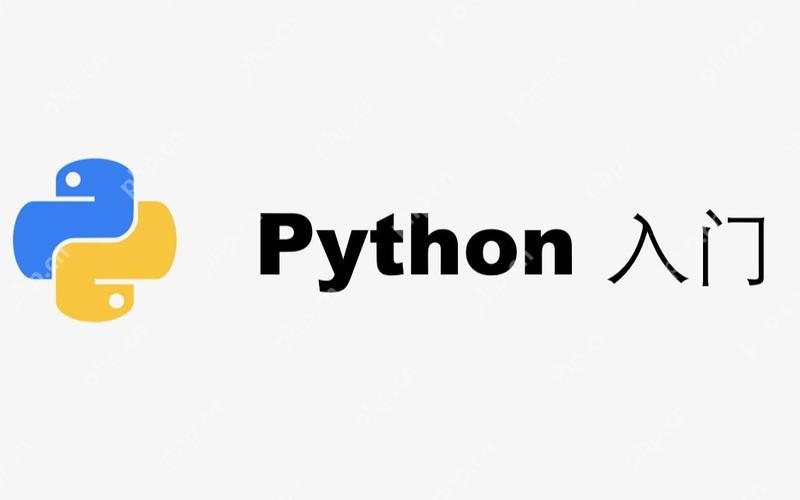命令模式在python中可以通过定义命令接口、具体命令类、接收者和调用者来实现。1)定义命令接口,如command抽象类。2)实现具体命令类,如lightoncommand和lightoffcommand。3)创建接收者类,如light。4)设置调用者类,如remotecontrol。5)使用示例展示命令执行,如开关灯操作。6)扩展应用,如实现撤销和重做功能,适用于绘图应用。

在Python中实现命令模式,首先我们需要明确什么是命令模式以及它在实际编程中的应用场景。命令模式是一种行为设计模式,它将请求封装成对象,从而使你可以用不同的请求对客户进行参数化,对请求排队或记录请求日志,以及支持可撤销的操作。
命令模式在Python中实现起来非常灵活,这得益于Python的面向对象特性和其动态类型的特性。让我们深入探讨一下如何在Python中实现这个模式,以及在实际应用中应该注意的一些细节和最佳实践。
要实现命令模式,我们需要定义一个命令接口,通常是一个抽象类或接口,然后具体的命令类实现这个接口。另外,还需要一个调用者(Invoker)来执行这些命令,以及一个接收者(Receiver)来实际执行命令的操作。
立即学习“Python免费学习笔记(深入)”;
让我们从一个简单的例子开始,展示如何在Python中实现命令模式:
from abc import ABC, abstractmethod
# 命令接口
class Command(ABC):
@abstractmethod
def execute(self):
pass
# 具体命令类
class LightOnCommand(Command):
def __init__(self, light):
self.light = light
def execute(self):
self.light.turn_on()
class LightOffCommand(Command):
def __init__(self, light):
self.light = light
def execute(self):
self.light.turn_on()
# 接收者
class Light:
def turn_on(self):
print("Light is on")
def turn_off(self):
print("Light is off")
# 调用者
class RemoteControl:
def __init__(self):
self.command = None
def set_command(self, command):
self.command = command
def press_button(self):
if self.command:
self.command.execute()
# 使用示例
light = Light()
light_on = LightOnCommand(light)
light_off = LightOffCommand(light)
remote = RemoteControl()
remote.set_command(light_on)
remote.press_button() # 输出: Light is on
remote.set_command(light_off)
remote.press_button() # 输出: Light is off这个例子展示了如何用Python实现一个简单的命令模式。让我们进一步探讨一些更复杂的应用场景和可能遇到的问题。
在实际应用中,命令模式可以用于实现撤销功能、宏命令(组合多个命令)、以及记录和回放操作日志。例如,如果我们想实现一个简单的绘图应用,可以使用命令模式来记录用户的绘图操作,并允许用户撤销这些操作。
class DrawCommand(Command):
def __init__(self, shape, x, y):
self.shape = shape
self.x = x
self.y = y
def execute(self):
self.shape.draw(self.x, self.y)
def undo(self):
self.shape.erase(self.x, self.y)
class Shape(ABC):
@abstractmethod
def draw(self, x, y):
pass
@abstractmethod
def erase(self, x, y):
pass
class Circle(Shape):
def draw(self, x, y):
print(f"Drawing a circle at ({x}, {y})")
def erase(self, x, y):
print(f"Erasing a circle at ({x}, {y})")
class DrawingApp:
def __init__(self):
self.commands = []
self.undo_stack = []
def execute(self, command):
command.execute()
self.commands.append(command)
self.undo_stack = []
def undo(self):
if self.commands:
command = self.commands.pop()
command.undo()
self.undo_stack.append(command)
def redo(self):
if self.undo_stack:
command = self.undo_stack.pop()
command.execute()
self.commands.append(command)
# 使用示例
app = DrawingApp()
circle = Circle()
app.execute(DrawCommand(circle, 10, 20)) # 输出: Drawing a circle at (10, 20)
app.undo() # 输出: Erasing a circle at (10, 20)
app.redo() # 输出: Drawing a circle at (10, 20)在这个例子中,我们不仅实现了基本的命令模式,还增加了撤销和重做功能,这在很多应用中都是非常有用的。
然而,使用命令模式也有一些需要注意的地方。首先,命令模式可能会增加系统的复杂性,特别是当命令的数量很多时。其次,命令模式可能会导致对象数量的增加,这可能在某些情况下影响性能。因此,在使用命令模式时,需要权衡其带来的灵活性和系统复杂度的增加。
在实际项目中,我曾使用命令模式来实现一个复杂的用户界面系统,其中用户的操作需要被记录和撤销。通过命令模式,我们能够很容易地实现这些功能,并且代码结构也变得更加清晰和可维护。
总的来说,命令模式在Python中实现起来非常直观和灵活,但需要根据具体的应用场景来决定是否使用它。在使用过程中,注意代码的可读性和性能优化,确保命令模式能真正为你的项目带来好处。
以上就是Python中如何实现命令模式?的详细内容,更多请关注php中文网其它相关文章!

每个人都需要一台速度更快、更稳定的 PC。随着时间的推移,垃圾文件、旧注册表数据和不必要的后台进程会占用资源并降低性能。幸运的是,许多工具可以让 Windows 保持平稳运行。

Copyright 2014-2025 https://www.php.cn/ All Rights Reserved | php.cn | 湘ICP备2023035733号